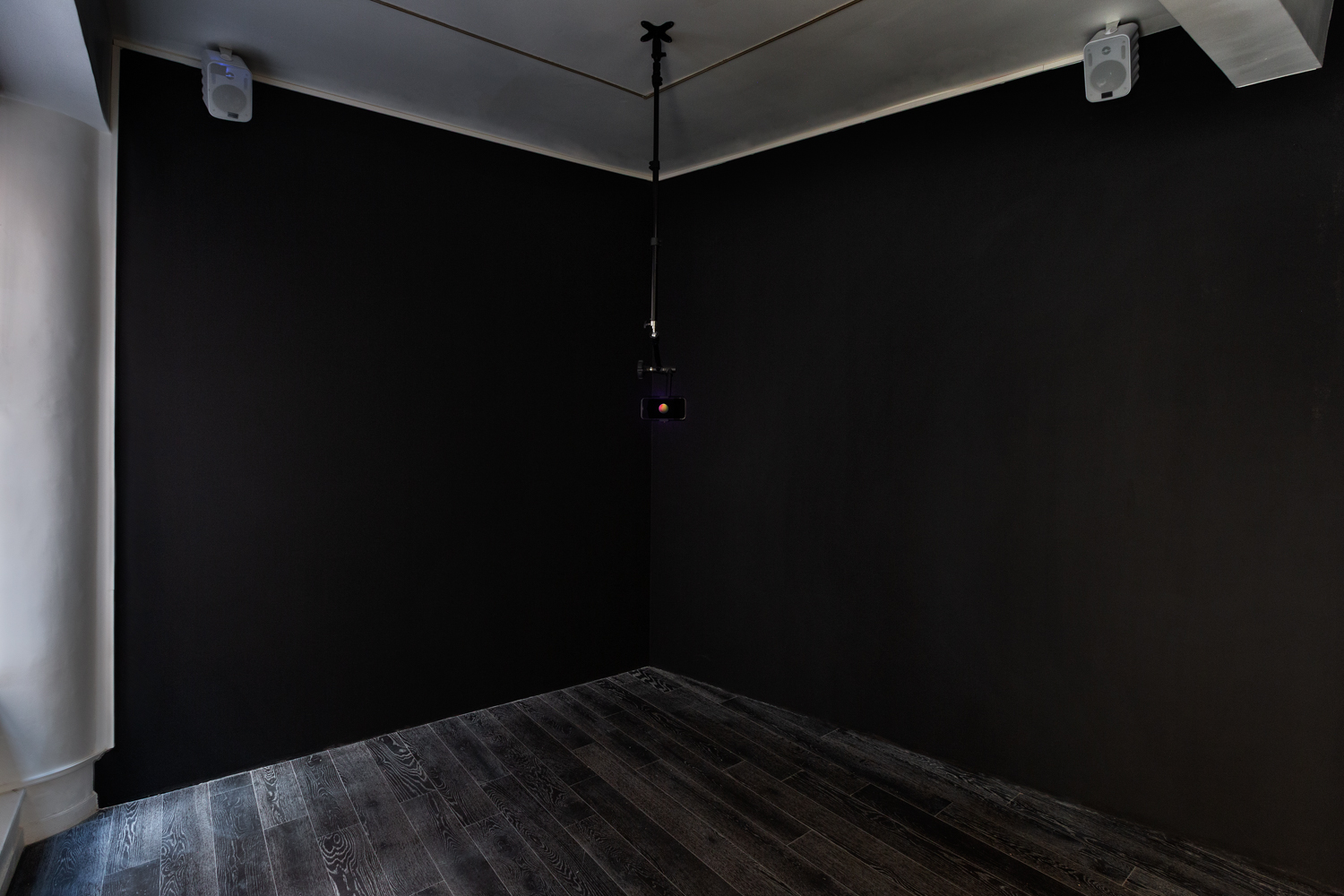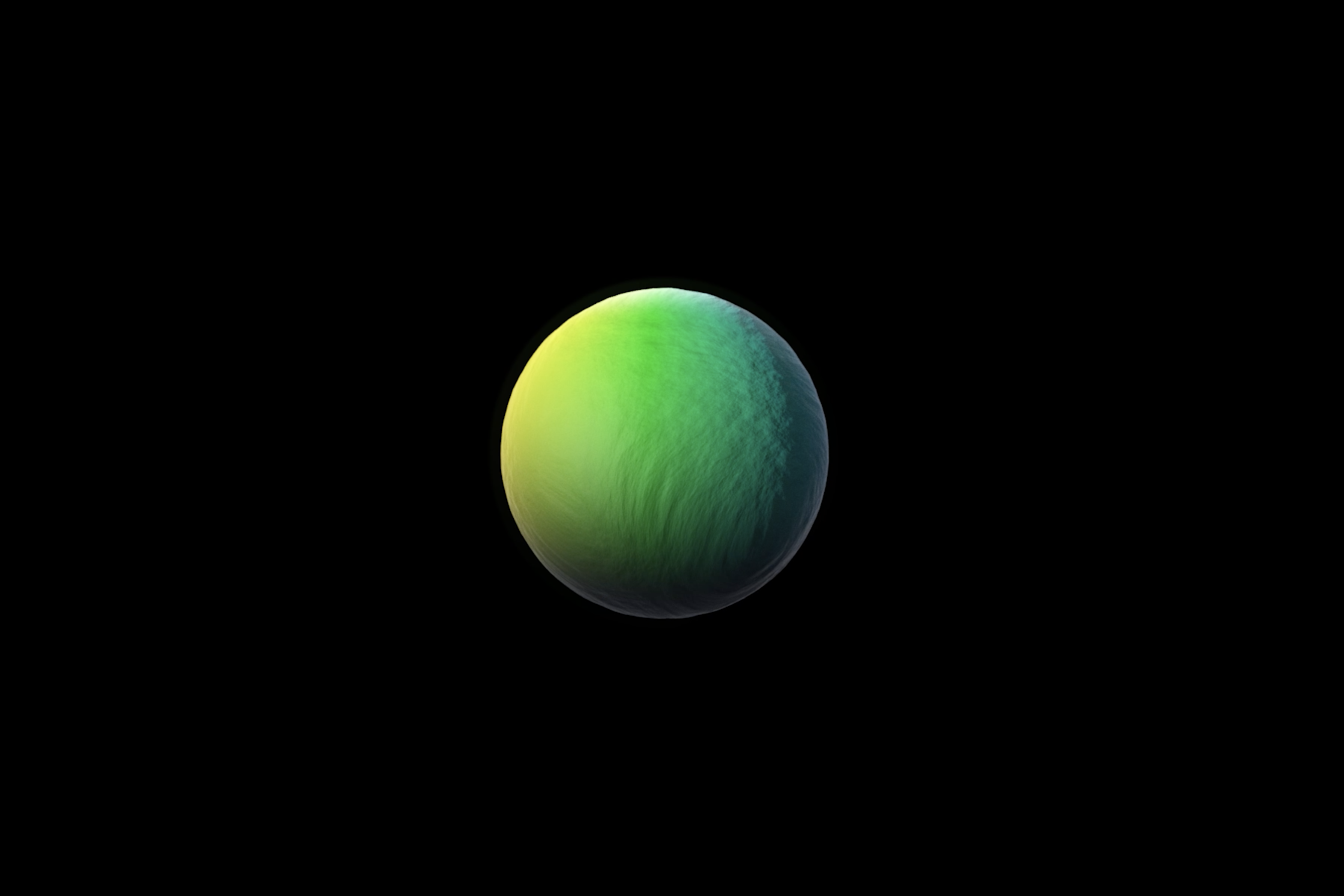


Horizon
JKG Odéon
In the darkened gallery space, a small screen floats, displaying a looped image of a multicolored sphere. The device—a smartphone—is mounted on the end of a metal arm suspended from the ceiling. A deep, muffled sound fills the room.
On page 89 of her book Self Plus. Itinerary for Becoming Oneself (Seuil / Fiction & Cie, 2023, in French), Stéphanie Solinas (born 1978 in France, lives in Paris) pauses briefly in her wide-ranging investigation into the technologism shaping our world and radiating from the West Coast of the United States. While speaking with an astronomer from the SETI Institute (Search for Extra-Terrestrial Intelligence) in Silicon Valley, the protagonist scribbles a note to herself: “Turn the color wheel into a sphere—transform the ordered, conventional representation of the portion of the electromagnetic spectrum visible to humans into a world of its own.”
With Horizon (2019–2025), Stéphanie Solinas gave form to this thought. The electromagnetic spectrum is fundamental to technology, science, medicine, and industry. It comprises a range of electromagnetic waves that vary in wavelength and frequency. There are seven categories, of which only visible light—colors, in other words—can be perceived by the naked eye. Horizon presents the color wheel enclosed in the form of a “planet of the visible,” floating as “a world in its own” in the vastness of black nothingness. A work that invites us to see the act of seeing embodied in a small sphere of light, Horizon indirectly questions the enormity of our ignorance. The artist explains that her work seeks to “grasp the thinking at work in the very operation of ‘seeing,’ and the weaving together of the visible and the invisible, the rational and belief, which make us who we are.” The soundtrack accompanying the video is an interpretation of the sounds emitted by black holes in space.
Horizon constitutes the sixth of the Twelve West Coast Stations which structure the vast project Becoming Oneself, a field investigation conducted in the U.S. on the invention of the “augmented” human. The other research territories explored by Stéphanie Solinas over the past decade are Iceland and its question of invisible worlds, and Italy and the question of miracles.
In parallel with the Horizon exhibition at JKG Odéon, Stéphanie Solinas also presents at JKG Vaugirard from April 5 to July 26 No More Bets, an exhibition revolving around Rio Buenaventura (2019–2025), a playable version of the book Self Plus. Itinerary for Becoming Oneself. While Horizon is an immersive and meditative installation, No More Bets is an exhibition meant to be played.
—Jean-Kenta Gauthier, April 2025